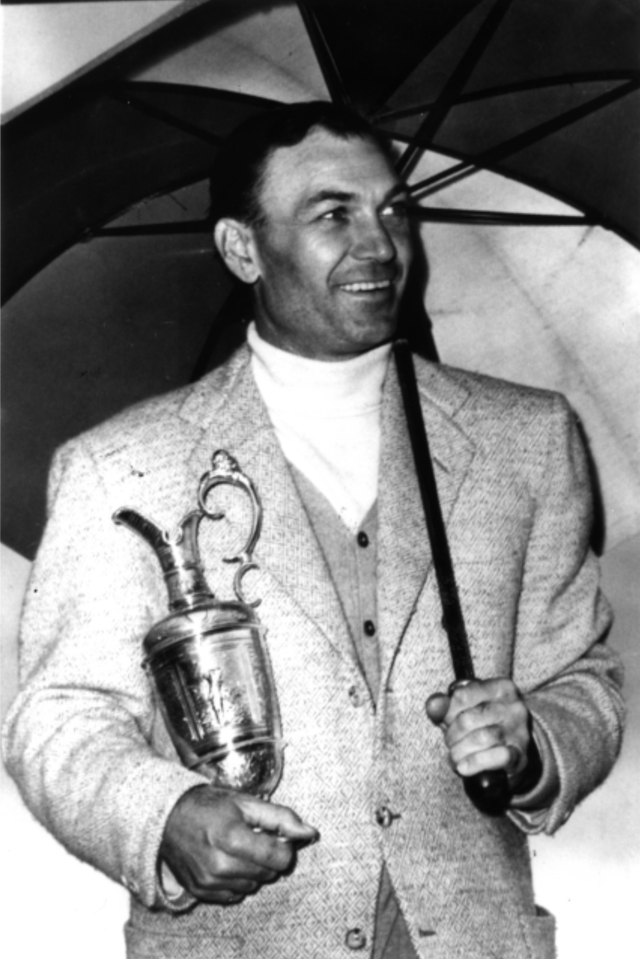One-Plane Golf Swing Fundamentals

In his 2005 book, “The Plane Truth for Golfers,” golf instructor Jim Hardy labels all golf swings as either “one-plane” or “two-plane” swings. In a one-plane swing, a golfer’s arms and shoulders swing along the same plane. Two-plane swingers move their arms in a more vertical arc, relative to the plane in which the golfers’ shoulders turn.
Grip
Because the one-plane method doesn’t require much hand motion, golfers should use a neutral or slightly strong grip when they’re employing this swing, according to golf coach Sam Letourneau. In a neutral grip for a right-handed player, the V shape formed by the thumb and first finger of your left hand points toward your chin, while the V formed by the thumb and forefinger of your right hand is aimed at your right shoulder. To strengthen your grip, remove your right hand from the club and rotate your left hand clockwise, so the V shape points toward your back shoulder. Then place your right hand back on top of your left.
Hip Tilt
To execute a one-plane swing, bend forward from the hips approximately 35 to 40 degrees. If you stand too far upright and attempt to execute a one-plane swing your swing arc will be too flat -- the club may even be close to horizontal on the backswing. To test your hip tilt, Letourneau suggests holding a club against your upper chest with the shaft running through the line of your shoulders. Rotate your body as you would in your backswing. The end of the club on your left side should point just beyond the ball. If it points more than four feet past the ball, then you’re standing overly erect. Once you’ve established the proper hip tilt, be sure to maintain that tilt throughout your swing.
Backswing
In a one-plane golf swing, the player takes the club back around his body, rather than lifting if fairly straight over his head. The distinction is most obvious at the top of the backswing, where a one-plane swinger’s left arm should be roughly parallel to the shoulder plane -- for a right-handed golfer. Hardy notes that it’s important to keep your head “relatively still” during a one-plane backswing.
Downswing
Your arms and hands should begin the downswing passively. The player should simply drop her hands down to start the downswing, as the golfer’s hip and shoulder rotation naturally swings the club along the same plane it traversed on the backswing. At the same time, Hardy says you must turn your body “as hard as you can.” But be careful not to drop your right shoulder, or you’re likely to swing too much from the inside, resulting in a push shot to the right of your target.
One-Plane Vs. Two-Plane
Hardy doesn’t believe that either swing type is superior, but he strongly advises golfers never to mix the two styles. Instead, select the style that works for you, then apply either one-plane or two-plane techniques consistently.
References
Writer Bio
M.L. Rose has worked as a print and online journalist for more than 20 years. He has contributed to a variety of national and local publications, specializing in sports writing. Rose holds a B.A. in communications.
